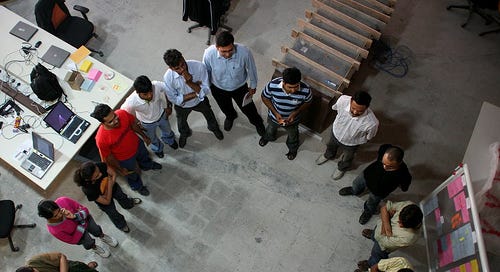Agile methodologies have become a buzzword in the software development world and beyond. Yet, instead of delivering on the promise of flexibility and collaboration, Agile is often blamed for project failures, missed deadlines, and frustration on both sides of the development aisle. Why?
The problem isn't Agile itself. It's the breakdown of trust and communication between the people involved. In many organizations, a chasm exists between business leaders (who want results) and programmers (who want to build things right). When this chasm isn't addressed, it creates a state of organized chaos, or "chaordic environment," where competing priorities and misunderstandings reign.
The Missing Links: Trust, WOW, and a Mindset Shift
To turn the tide on Agile frustration, we need to focus on three key elements:
1. Trust: Without trust, any methodology is doomed. Business leaders need to trust that their programmers are competent and care about delivering value. Programmers need to trust that business leaders understand the realities of development and won't make unreasonable demands. This trust is foundational.
2. Way of Working Agreements (WOW): A WOW is a simple, explicit agreement between the team and stakeholders on how they will work together. It outlines communication channels, decision-making processes, expectations for feedback, and more. A clear WOW reduces ambiguity and provides a framework for resolving conflicts.
3. Agile Mindset: Embracing an Agile mindset means accepting that change is inevitable and even beneficial. It means valuing collaboration over rigid hierarchies, and focusing on delivering working software early and often. Both business leaders and programmers need to adopt this mindset for Agile to truly succeed.
The Chaordic Conundrum
When trust and a WOW are absent, and an Agile mindset isn't embraced, the result is often a chaordic environment. This is a state where order and chaos co-exist. Priorities shift constantly, last-minute changes are common, and there's a pervasive sense of uncertainty. In a chaordic environment, stress levels soar, productivity plummets, and it's easy to blame the methodology itself.
Simplicity as the Solution
The good news is that the solution to Agile frustration is simpler than you might think. It doesn't require elaborate tools or complex processes. It boils down to fostering trust, establishing clear agreements, and embracing a flexible mindset. When these elements are in place, Agile becomes a powerful tool for collaboration and delivering value.
The Takeaway: If you're struggling with Agile, stop blaming the methodology and start looking inward. Are you building trust? Do you have a clear WOW? Have you embraced the Agile mindset? If not, it's time to make some changes. The rewards – in terms of productivity, innovation, and job satisfaction – will be well worth the effort. Visit the agile experts in the referenced links below.
One would think that a group of people working and collaborating together on a shared goal getting together via a daily, brief meeting (so they can help each others with problems and readjust the shared goal plan, if need be) would be not just agile, but smart! And it is! Good teams do this all the time without prompting and without a consultant or a boss telling them to do it. All the agile manifesto did was call out some universal values: “Individuals and interactions over processes and tools.”
Reference:
Martin Fowler and Jason Yip: Its just not standing up https://www.martinfowler.com/articles/itsNotJustStandingUp.html
Scott Ambler and Mark Lines: Choose your WOW
https://www.amazon.com/Choose-your-WoW-Disciplined-Optimizing/dp/1628256508
Growth Mindset: Dr. Carol Dweck
https://hbr.org/2016/01/what-having-a-growth-mindset-actually-means
Ed and Peter Schein: Humble Leadership



